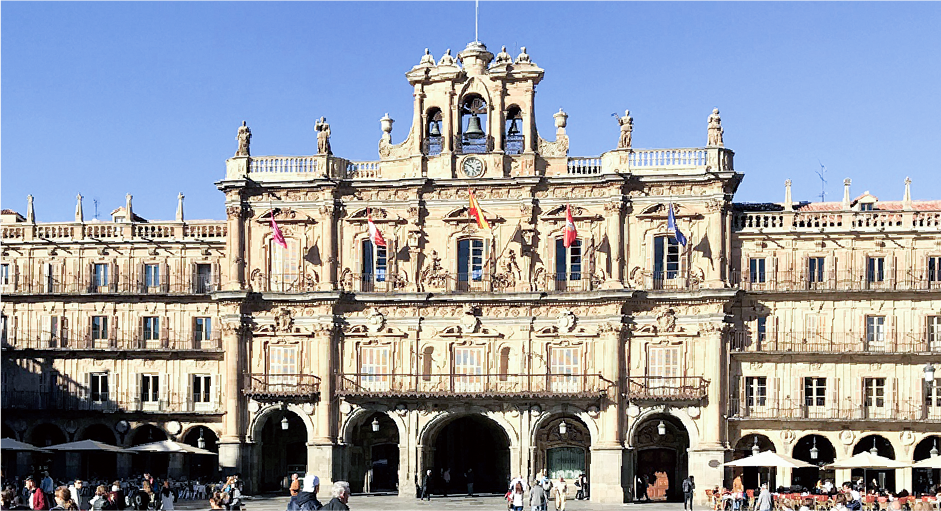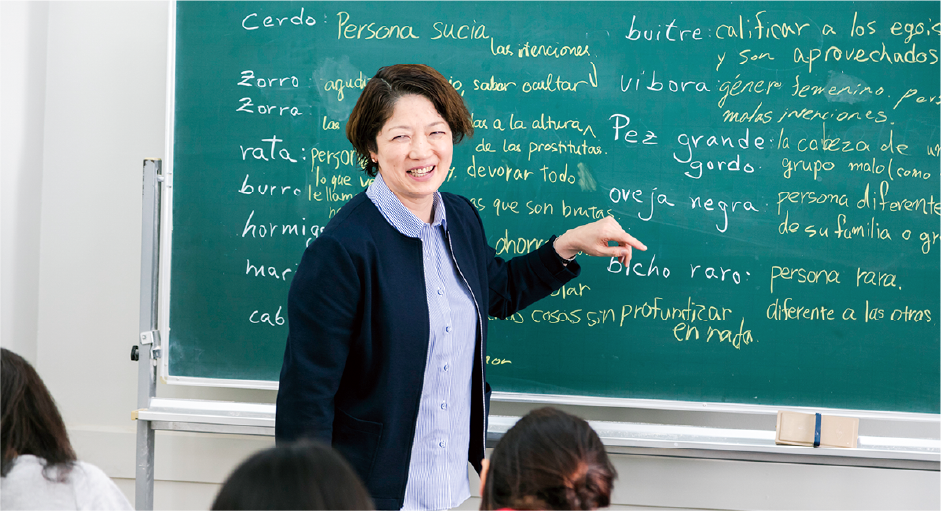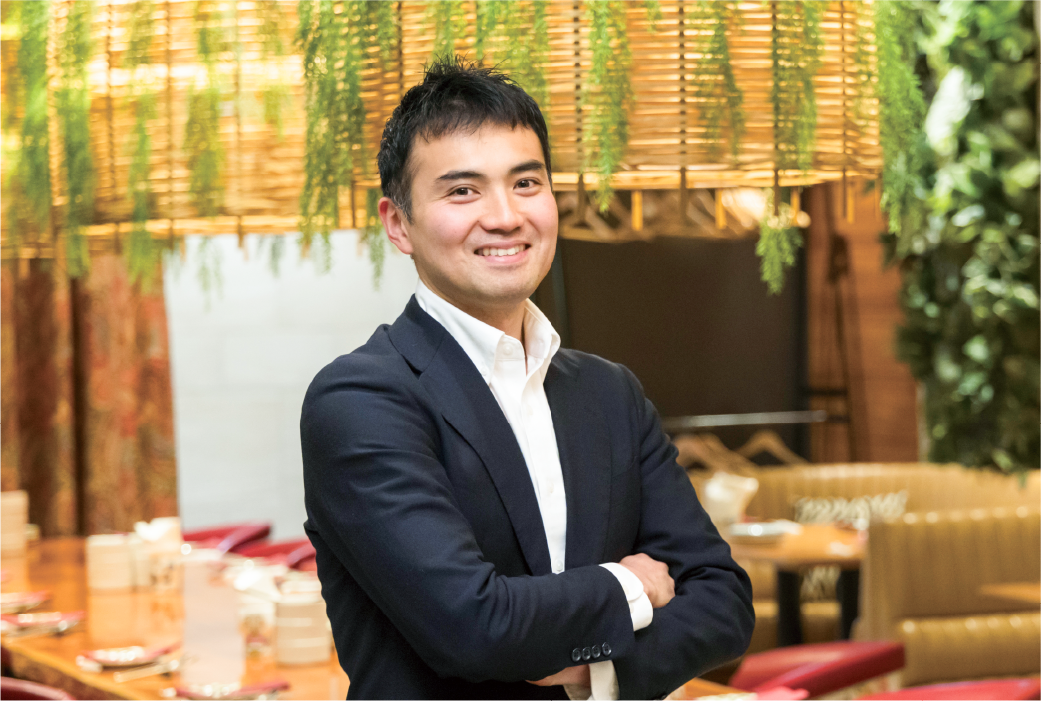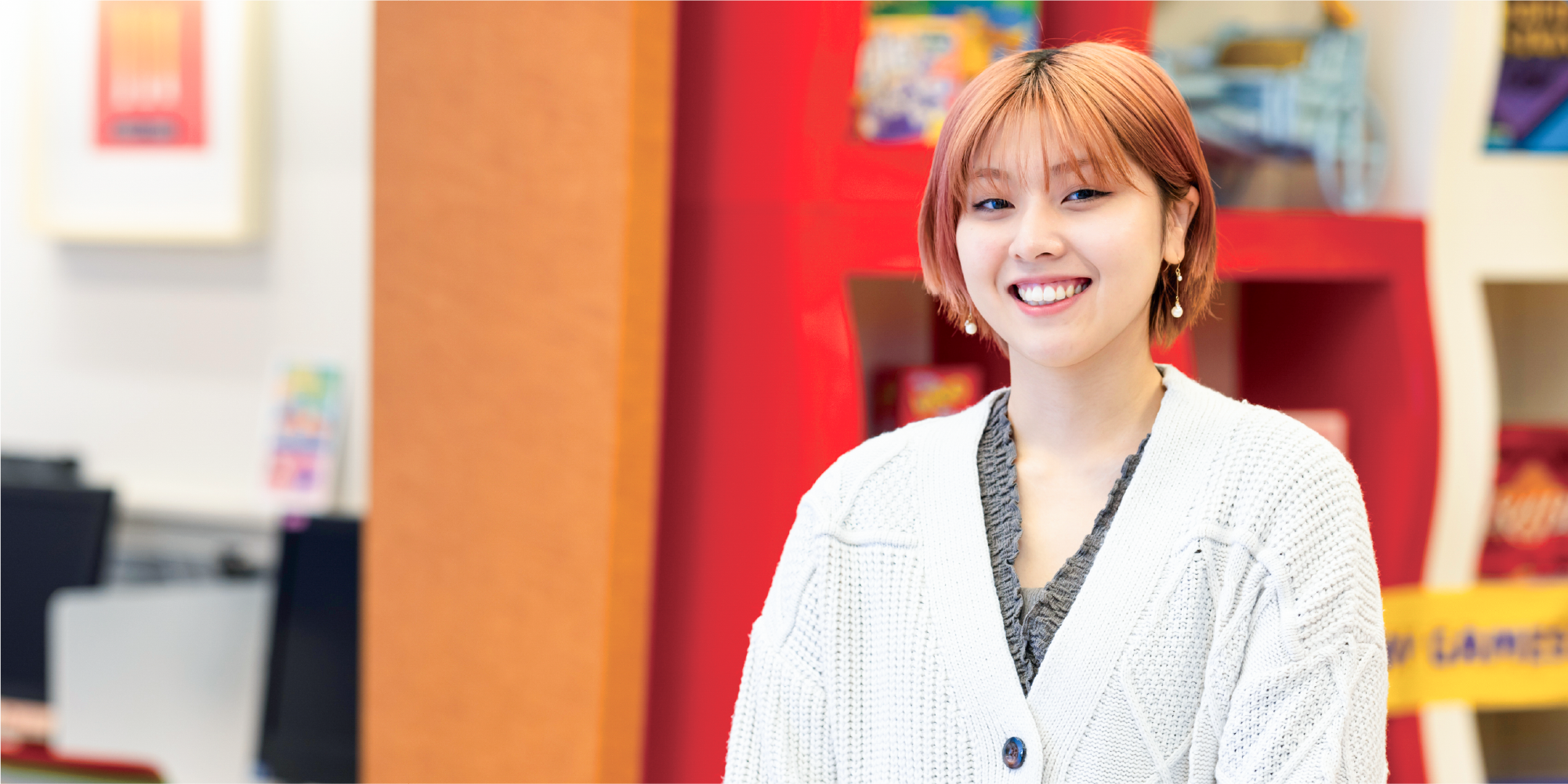TOPICS
Course Topics
Educational Exchange Program" Study Abroad in Spain
You can study abroad during the spring and summer vacation periods or after graduation at a locally affiliated language school. In addition to language study after graduation, students may choose to study flamenco, music, painting, cooking, etc.

- training location
- Madrid, Spain / Salamanca / Alicante
- affiliated school
- Estudio Sampere/Colegio de Espa?a/YA Hablas
Educational Exchange Program" Training in Spain
You will study at the University of Salamanca, Spain's oldest university, founded in 1218. With over 800 years of history, the University of Salamanca is a coveted destination for students of Spanish.
- training location
- Salamanca, Spain
- affiliated school
- International Courses at the University of Salamanca
- Period
- Approx. 1 month (March)
- residential structure
- Either university dormitory or homestay
- Participation Criteria
- Spanish course 1st year
Must have passed all courses prior to studying abroad - Training Expenses
- Approximately 500,000-600,000 yen (travel, accommodation, tuition, etc.)
Taking the certification test (required)
By graduation, students are expected to have obtained at least Level 4 of the Spanish Proficiency Test, B1 of the DELE Spanish Language Proficiency Test, or "B1" of the SIELE.

MESSAGE
Messages from Graduates
Connecting Mexico and Japan through food.
Spanish is spoken all over the place.
I run a global company.
I am involved in the management of this company, which imports and sells food products mainly from Mexico. My love for Mexico began when I was a high school student and stayed there for a year as an exchange student. Cactus is actually a popular local food. One day, when my host requested Japanese food, I made kinpira, a dish using cactus, which was a big hit. I realized that if this cactus was available in Japan, Japanese people could also enjoy this kinpira. That experience led me to my current job, and when I succeeded in getting edible cacti on the shelves of Japanese supermarkets, I felt that my longtime dream had come true. After graduating from high school, I was attracted to an environment where I could learn Spanish to the fullest, so I enrolled in Kanda Institute of Languages. I really enjoyed my school life with my peers who were committed not only to study but also to play. At Kyoto University of Foreign Studies, where I transferred to, I had the opportunity to interact with Cuban Olympic athletes, the Vice President of Nicaragua, and the King of Spain. I was blessed with many valuable experiences because I kept saying out loud what I wanted to do. The more you challenge yourself, the more you open up a path. I have experienced this, and that is why I am where I am today. Currently, I am expanding my business and running a Mexican restaurant. I am now expanding my business and running a Mexican restaurant, serving authentic Mexican cuisine with staff from Mexico. I am now running a Mexican restaurant with my staff, who are from Mexico. I find it rewarding to let customers know about the "real Mexico" and how delicious Mexican food is. My goal, now and in the past, has always been to connect Japan and Mexico through food. I would like to continue to broaden my antennae and seize opportunities.

IGC Overseas Division
Seiji Kondo
Asian/European Languages, Spanish Course, Graduated in March 2008
Kyoto University of Foreign Studies, Department of Spanish, March 2010, B.A.
Tokyo, Gakushuin High School graduate





